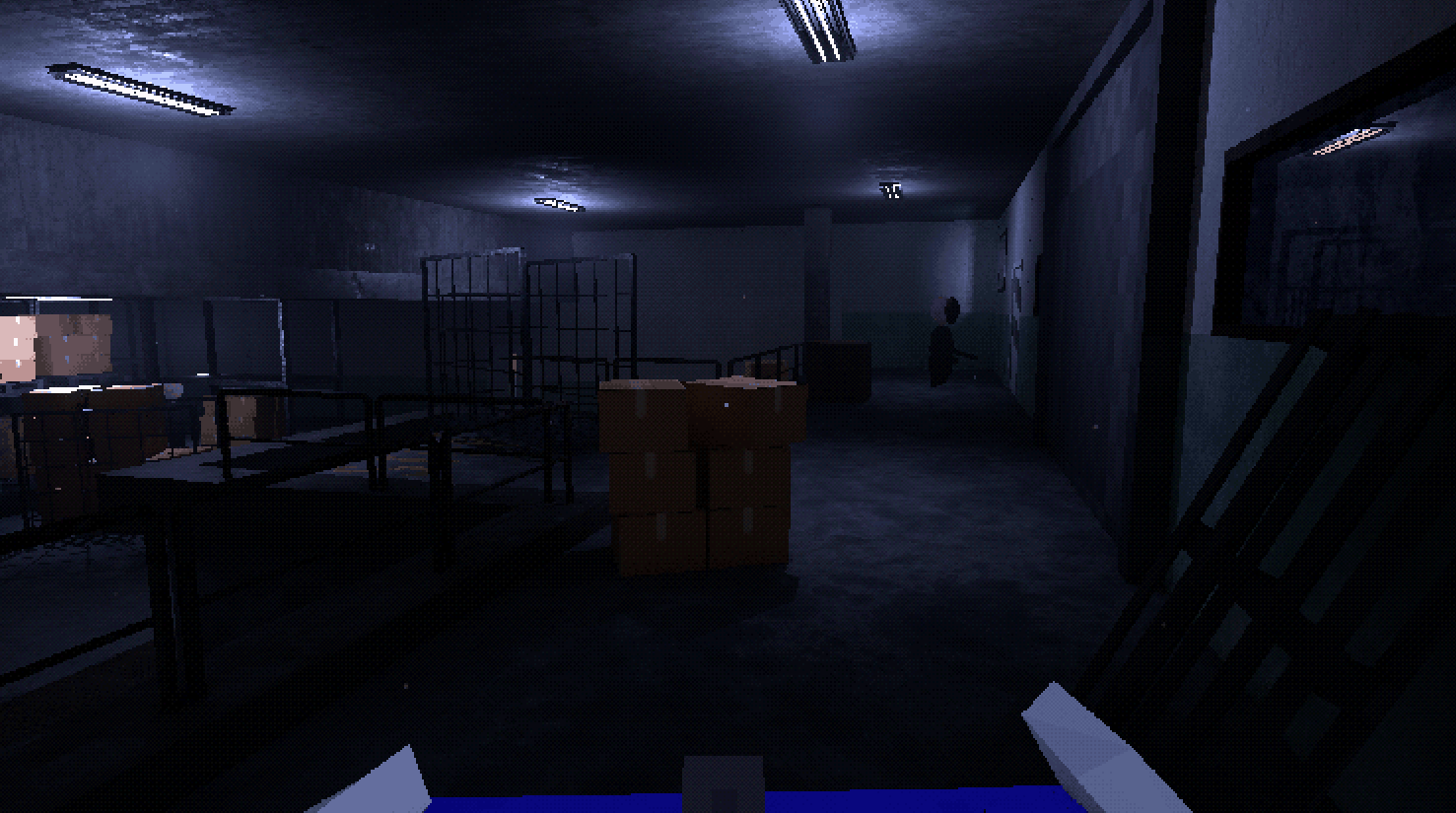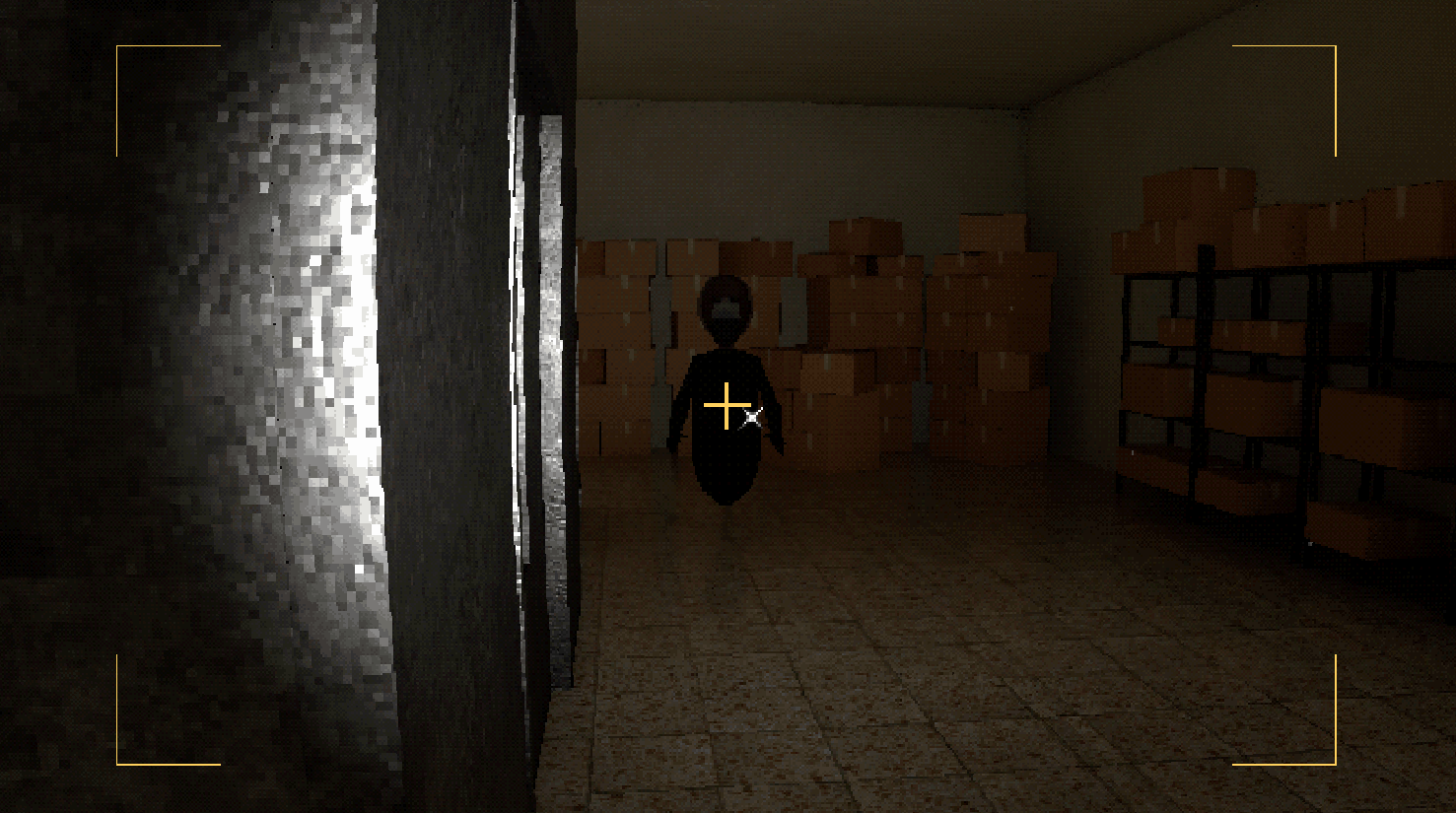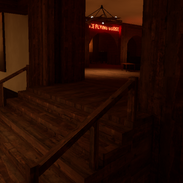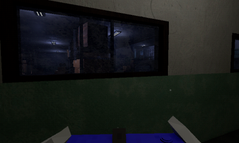CONTRIBUTIONS

Level Design
I was responsible for creating the level design in the game. I worked on the layout, blockouts to the last stages of implementing 3D assets.
DESIGN PILLARS

Attention to detail is essential—uncover clues to progress through the haunted apartment complex. Rely on your journalistic instincts to solve puzzles.

The apartment complex hosts paranormal activity, requiring players to utilize camera equipment to detect and eliminate ghosts.
Encounter Design
I was responsible for designing combat encounters and implementing the supporting gameplay systems.


Colab
Collaborated with other team disciplines to develop the game's art style and design elements related to combat and narrative.

Caution
Caution is essential for survival—investigate before acting, and use running, sneaking, and strategic movement to stay alive.

SPECTER SNAPPER
THE GAME
Specter Snapper is a retro-style, single-player first-person mystery game that follows a journalist on the hunt for her next big story. Drawn by eerie rumors, she travels to a long-abandoned building in the remote wilds of Alaska to uncover the truth behind a series of unexplained disappearances.
Armed with only her camera and journal, she soon discovers the building is haunted by spirits. To survive and uncover the mystery, she must document the supernatural, piece together what happened, and escape a growing nightmare.
LEVEL DESIGN
Specter Snapper is all about creating an emotional journey through level design. I structured the game into three stages, each meant to capture a different feeling: starting with isolation, moving into claustrophobia, and ending with a sense of mystery.
What mattered most was making the spaces feel real and believable. When blocking out levels, I paid close attention to how the architecture connected—staircases leading to platforms, platforms leading to doorways. If something felt off, like skipping a natural transition, it immediately broke the sense of immersion.
I also found it helpful to think about the purpose behind every room. Even in a fictional world, spaces feel more authentic when they serve a function. That mindset not only grounded the environments but also made the overall experience more engaging and meaningful for players.
LEVELS

Lobby
Isolation

Basement
Claustrophobia

Mines
Mystery
Lobby
The first impression relies heavily on the composition of the first frame of the level to introduce the vastness and emptiness of the apartment complex. The design choice of emphasising vastness was used to communicate the feeling of isolation and add to the mystery of the game.
I designed this level with verticality in mind to encourage players to explore on their own intuition. It also helps reinforce the feeling of isolation—being surrounded by vast space, but without the comfort of any social interaction.
With exploration in mind as one of the core pillars of the game, I gave the players the freedom to pick their own path and discover things at their own pace and discover the clues dynamically.
Overview

Gallery

Basement
This area was designed to push the feeling of isolation even further by adding a sense of claustrophobia. I did this by taking away the player's freedom of choice, forcing them into a more linear path with a clear point of no return.
I chose to design the level with narrow corridors and less space making the level more cramped and pushing the player deeper into the level and raising the stakes.

Mines
The goal of the third and final level was to bring together all the core emotions of the game: isolation, claustrophobia, and mystery. I designed it with branching paths that all lead to the same endpoint, creating the illusion of choice while keeping the player on a controlled emotional journey.
Isolation and claustrophobia come through in the tight, narrow spaces—surrounded by enemies and confined environments. The level starts off feeling cramped and enclosed, pushing the player to confront those feelings right away.
As the level progresses, vertical spaces begin to open up, introducing a sense of mystery and the unknown, building on the emotional tension established earlier.


ENCOUNTERS
The encounters in Specter Snapper are designed to progressively change as you get further into the game.
There are two different types of enemies in the game; melee and ranged.

Covers are used to hide from enemies
The melee enemy is a static enemy that will spot the player and go towards player location, or last seen player location. If the enemy can’t get visual of the player, the enemy will return to their guard position in the level.


The weapon can use modifications, the SMG modification is used here, increasing the camera shutter speed.











































